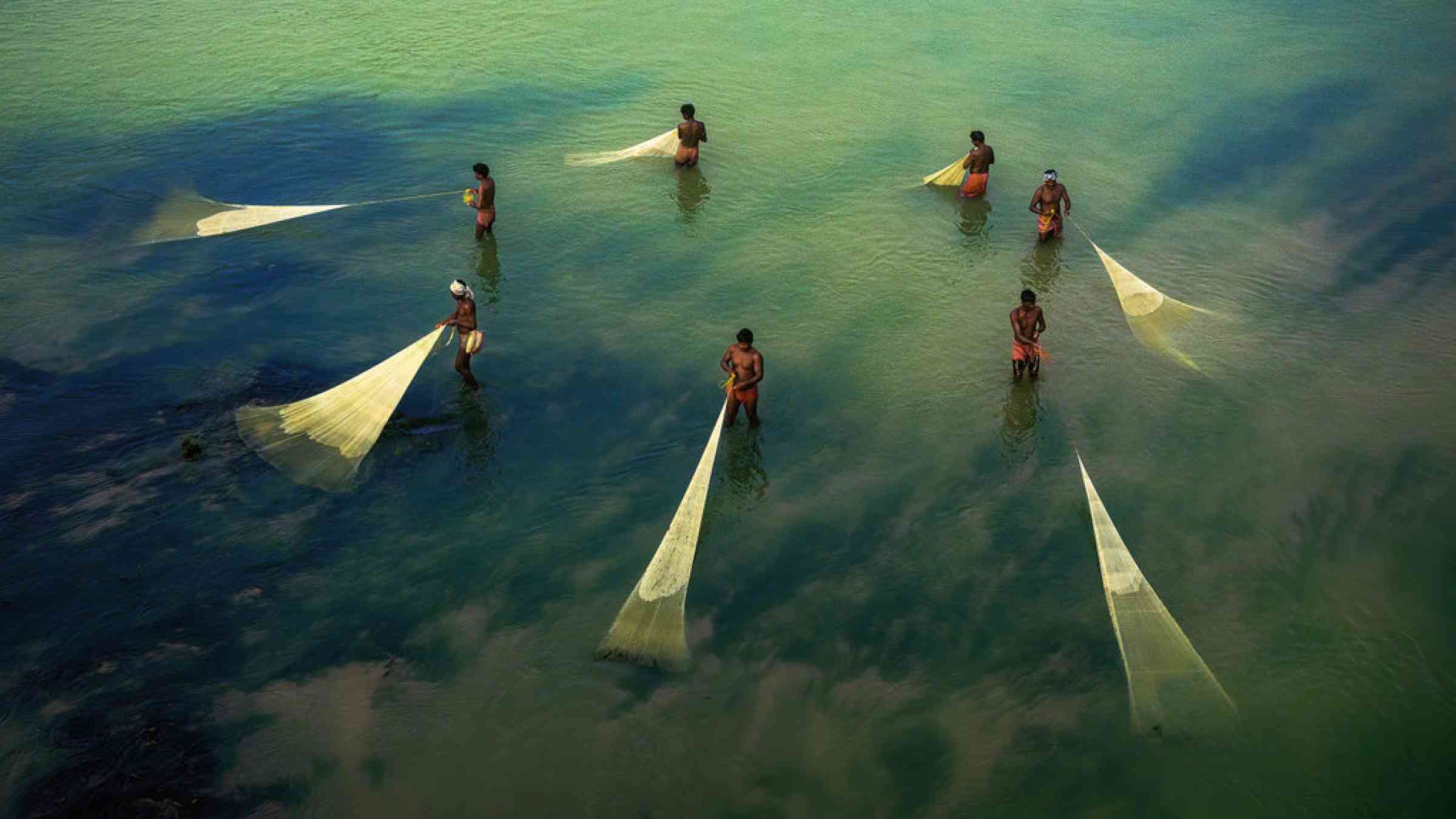Please help us improve PreventionWeb by taking this brief survey. Your input will allow us to better serve the needs of the DRR community.
On the frontlines of climate change: Financing the largest community-based adaptation project in Vanuatu

‘We women depend on fishing along the coastline to provide fish for our families but most of our catch now are much smaller than the ones we caught here the past years,’ says Jennie Jenery, a villager from Efate Island in Vanuatu.
Dressed in a blue house dress, Jenery deftly strings a fishing reel while talking about her life on the island. ‘Agriculture is a major focus of our lives. We depend on agriculture’.
Vanuatu, a small island developing state in the Pacific, is home to approximately 320,000 people. According to the 2020 World Risk Report, the country leads the world disaster risk index as it is the most highly exposed to natural hazards. The increasing frequency of extreme weather events make the majority of the islands’ inhabitants, 80 per cent of whom are dependent on subsistence agriculture, extremely vulnerable to the impacts of climate change.
‘When you talk about droughts in Vanuatu, you talk about isolated communities, you talk about remote, smaller islands that get their main source of water from the rain. And [the impact] is not only on water, but food security as well,’ explains Nelson Kalo, Climate Change Mitigation Officer at the Department of Climate Change.
“Climate change impacts our community. We have seen changes with hurricanes, droughts, or hot periods. When there’s heavy rain, we experience flooding in many places, the floods destroy our crops and food supply.”
- Tavet Varao, a Village Chief in Santo Island
The ‘NextGen’ Projections for Western and Tropical Pacific: Current and Future Climate for Vanuatu study based on climate model simulations, conducted by Australia’s science agency, CSIRO, reinforces what the communities are already experiencing. It concluded that the three major climate drivers in the country are extreme rainfall, tropical cyclones, and sea level rise. These climate drivers are already having significant impacts on the lives and livelihoods of remote and rural communities across the country; undermining coping capacity, eroding development gains, and placing current and future generations at increased risk.
‘Pests are harming taro, our staple crop. Sometimes we suspect that climate change must be related,’ Varao says. ‘But we aren’t sure what to do, we don’t know how to stop these pests and diseases. I believe that if we had a community project that addresses the impacts of climate change, it would help us a lot with agriculture’.
Recognising these risks and the country’s vulnerability to climate change, the Vanuatu Climate Change and Disaster Risk Reduction Policy 2016-2030 set out a vision ‘to be a nation whose communities, environment, and economy are resilient to the impacts of climate change and disaster risks’. In line with this, the government of Vanuatu working with Save the Children Australia, with a USD 26.2 million grant from the Green Climate Fund (GCF), will implement the Vanuatu community-based climate resilience project (VCCRP) to help rural and coastal communities adapt to the climate crisis.
“One of the biggest challenges for locals here is the lack of communications networks. The access to services experienced by those of us who live in urban areas in terms of disaster risk reduction allow us to prepare in advance for disasters and be aware of proper safety measures to take. They don’t have this access.”
- Pauliane Basil, Climate Adaptation Officer at the Department of Climate Change
The VCCRP targets highly vulnerable communities with locally-led adaptation activities in the agriculture and fisheries sector in 29 Area Councils (the lowest level of administration) across the country. The project includes establishing local climate change and disaster risk reduction committees, protecting and restoring 11,600 hectares of local coastal and upland ecosystems, supporting smallholder farmers to implement climate-resilient agriculture techniques and artisanal fishers to undertake effective coastal resource management, and providing access to climate information and early warning systems, along with building capacity of communities to make decisions based on this information.
It will also raise awareness of climate change risks to food systems and livelihoods, helping communities to improve their local value chains and diversify their income. For example, women-led climate-resilient food processing and preservation businesses will be scaled up by helping them gain access to new markets through private partners via a collaboration with the Vanuatu Chamber of Commerce and Industry.
“This is the largest community-based adaptation project that Save the Children will be partnering with the government to implement in rural communities in Vanuatu. It’s a large-scale project that’s going to reach over 90,000 people – almost nearly half the rural population in Vanuatu – made possible because of GCF.”
- Louise Nasak, Project Team Lead of Save the Children in Vanuatu
‘The project will help the communities to increase their food security, support them to access climate information, and enable them to develop their own adaptation plans,’ Nasak adds.
‘Information about weather is important. If community members are able to receive monthly weather forecasts, they will be able to plan their work accordingly. They would be prepared and understand the weather predictions for the following month. I see this as a big need for the village where I live,’ affirms Rachel Taman, a villager from Santo Island.
At the time of this writing, the project was commencing implementation, with Save the Children and the Ministry of Climate Change supporting implementing partners to finalise activity plans and begin engagement with communities.
Explore further
Please note: Content is displayed as last posted by a PreventionWeb community member or editor. The views expressed therein are not necessarily those of UNDRR, PreventionWeb, or its sponsors. See our terms of use
Is this page useful?
Yes No Report an issue on this pageThank you. If you have 2 minutes, we would benefit from additional feedback (link opens in a new window).